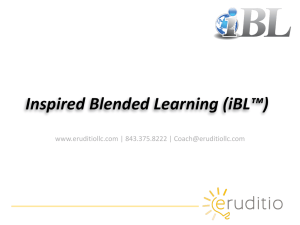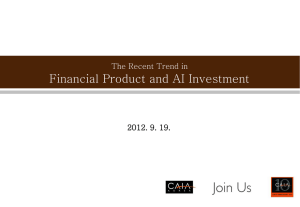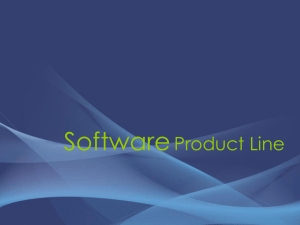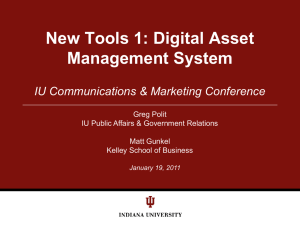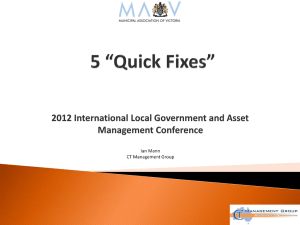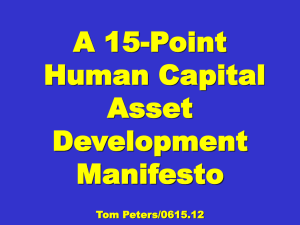FDA “Guidance for Industry: Quality Systems Approach to
advertisement
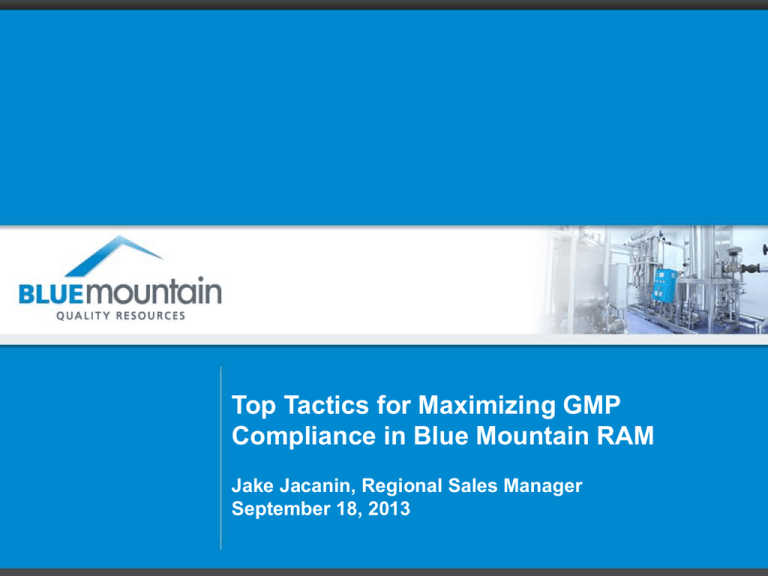
Top Tactics for Maximizing GMP Compliance in Blue Mountain RAM Jake Jacanin, Regional Sales Manager September 18, 2013 Presentation Objectives Convey importance of asset and event mgt Communicate systems approach to asset mgt Show broad scope and intricacies involved How to meet national and international regulations using Blue Mountain RAM Presentation Overview Asset compliance definitions Relevant regulatory observations and findings Current compliance trends and observations Compliant cGLP and cGMP asset mgt Quality Systems approach to asset mgt Top 10 GMP Deficiencies Categories Documentation of manufacturing and related activities Design and maintenance of premises and systems Documentation availability and accessibility of records Personnel training and qualifications Design and maintenance of equipment and systems Top 10 GMP Deficiencies Categories Cleaning validation and testing Equipment and process validation controls mgt Product quality review Supplier, contractor, vendor control and audit Calibration of measuring and test equipment Life Sciences Regulatory Trends Quality Systems inspections increased Regulatory inspections increased significantly Citations and violations increased significantly Warning letters doubled over past several years Relevant Definitions FDA Warning Letter – Correspondence to company representative – Noncompliance to regulatory standards (CFR’s) FDA Form 483 – Notice of inspectional observations identified Consent Decree – Voluntary order or judgment between parties Relevant Definitions Voluntary compliance – Acknowledgment and corrective action Assets – Equipment, instrument, system, location, personnel Events – Calibration, PM, validation, testing, NCR, training, cleaning Quality System – Personnel performing policies, practices, procedures FDA 483 Observations Failure to: “Adequately establish procedures to ensure equipment routinely calibrated, inspected & maintained” “Follow preventive maintenance schedule outlined” “Maintain buildings in a good state of repair” “Validate a computer database used for a quality function” “Have SOP’s ensure equipment routinely serviced” “Develop & maintain documentation of calibrations” Systems Approach Example Compliant Asset Management Process Asset: Assessment: Purpose, role, worthiness Determination: Importance relative to product Induction: Approach, process and methodology Classification: Criticality and risk relative to product Specification: Service events and services required Compliant Asset Management Process Asset: Servicing: Depth, detail and frequency Coordination: Event forecast, schedule and notification Personnel: Qualifications: Internal and external Preparation: Availability of standards, tools and parts Procedure: Detailed direction for performing event Compliant Asset Management Process Asset: Reporting: Event outcome, status and availability Actions: Active, repair required, obsolete/ retire Recording: Means to record, document findings Labeling: Label generation based on asset status Deviations: Document and communicate findings Compliant Asset Management Process Asset: Review: Analyze and approve event results Recall: Next event generated automatically Changes: Role, parts, specifications, locations Approval: Review and approval of changes Measurement: KPI’s, metrics and analytics Asset Induction Specification Form – Manual Method Who is Responsible to Specify? Under a quality system, the technical experts who have an understanding of pharmaceutical science, risk factors, and manufacturing processes related to the product, are responsible for defining specific facility and equipment requirements1 1FDA “Guidance for Industry: Quality Systems Approach to Pharmaceutical cGMP Regulations” Asset Classification - Criticality Asset Criticality Assessment Evaluation of assets role in production of product Potential impact to Product, Process, Safety Collaborative process using qualified people – e.g. Owner, Quality, Engineering, Metrology, Maintenance GAMP Classifications – Critical – Non-critical – No Impact Asset Criticality Classification Identify and determine asset purpose and role – HPLC monitors products purity Document assets classification and rational – Asset is critical since it monitors product purity Process provides gains in productivity Perform with new and repurposed assets Review and Approval Under cGMP regulations, the quality unit (QU) has the responsibility of reviewing and approving all initial design criteria & procedures pertaining to facilities & equipment & any subsequent changes (§ 211.22c) 1FDA “Guidance for Industry: Quality Systems Approach to Pharmaceutical cGMP Regulations” Personnel – Who is Qualified? Manage training for personnel and contractors Recall and document periodic training events Establish levels of required expertise “Crafts” Specify and assign work by craft and expertise Personnel Record Vendor and Contractor Management Manage vendors and contractors Document contact and contract info Document and embed contracts and req’s Document and maintain performance Recall events for audit and contract review Parts Inventory and Records Job Plan Work Event Scheduling Specification e.g. – Calibration Data Procedure: Detailed and Criteria Labeling CALIBRATION LABEL ID: SPS-1 Cal Date: 02/ 06/2013 Due Date: 03/06/2013 Technician: JAJ Asset Non-Conformance Asset Event Deviation-NCR Change Request and Review Measurements and Metrics Conclusion CFR Reg’s mandate compliant asset management Scope is broad, intricate and challenging Quality Systems approach is required Systems approach increases success rate Agencies expect show and tell Blue Mountain RAM: Best solution to maintain an asset’s compliance


